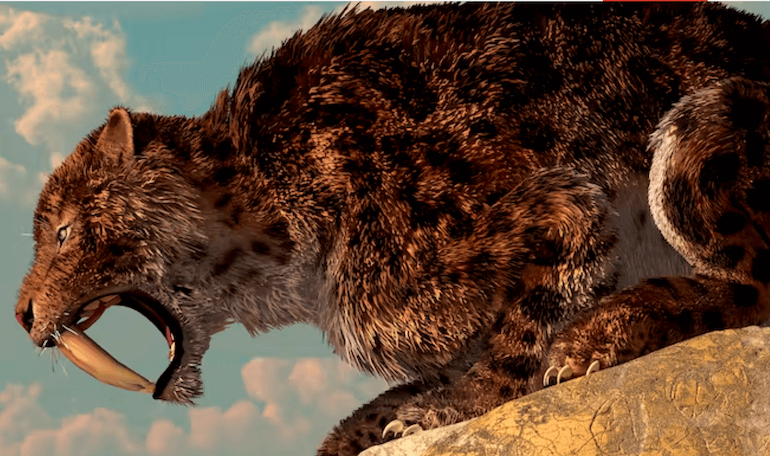Sabertooth cat skull newly discovered in Iowa reveals details about this Ice Age predator
Posted Apr 5, 2023

Posted Apr 5, 2023

The sabertooth cat is an Ice Age icon and emblem of strength, tenacity and intelligence. These animals shared the North American landscape with other large carnivores, including short-faced bears, dire wolves and the American lion, as well as megaherbivores including mammoths, mastodons, muskoxen and long-horned bison. Then at the end of the Pleistocene, between 50,000 and 10,000 years ago, they all vanished. The only place to see them now is in the fossil record.
Carnivore fossils are extremely rare, though, in comparison to those of their prey. Prey are always more abundant than predators in a healthy ecosystem. So the probability of burial, storage and discovery of carnivore bones and teeth is therefore slim compared to those belonging to herbivores.
That’s why the recent discovery of an exquisite sabertooth cat skull in southwestern Iowa is so exciting. The Smilodon fatalis skull was collected from late Pleistocene sand and gravel exposed along the East Nishnabotna River. Iowa State University associate professor of anthropology Matthew G. Hill and his colleague, biologist David A. Easterla, are studying this specimen to learn more about the life history, prey selection and eventual extinction of this ancient predator.
Read Hill’s full article in The Conversation here.